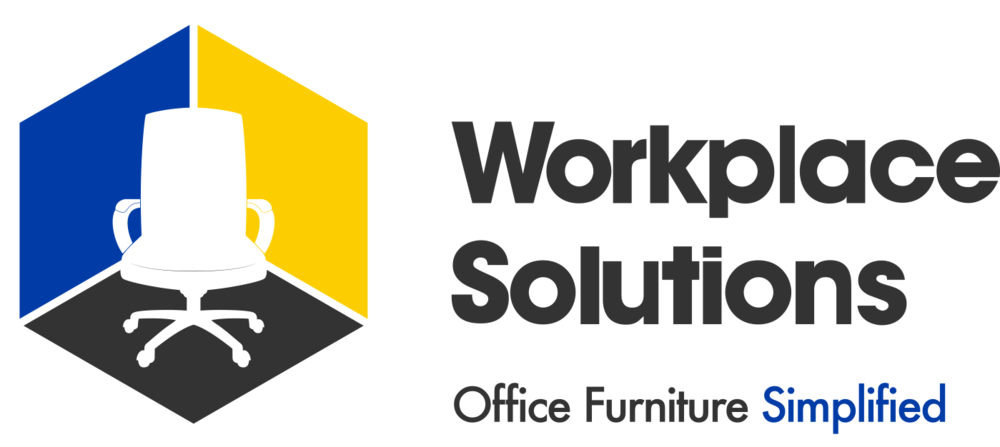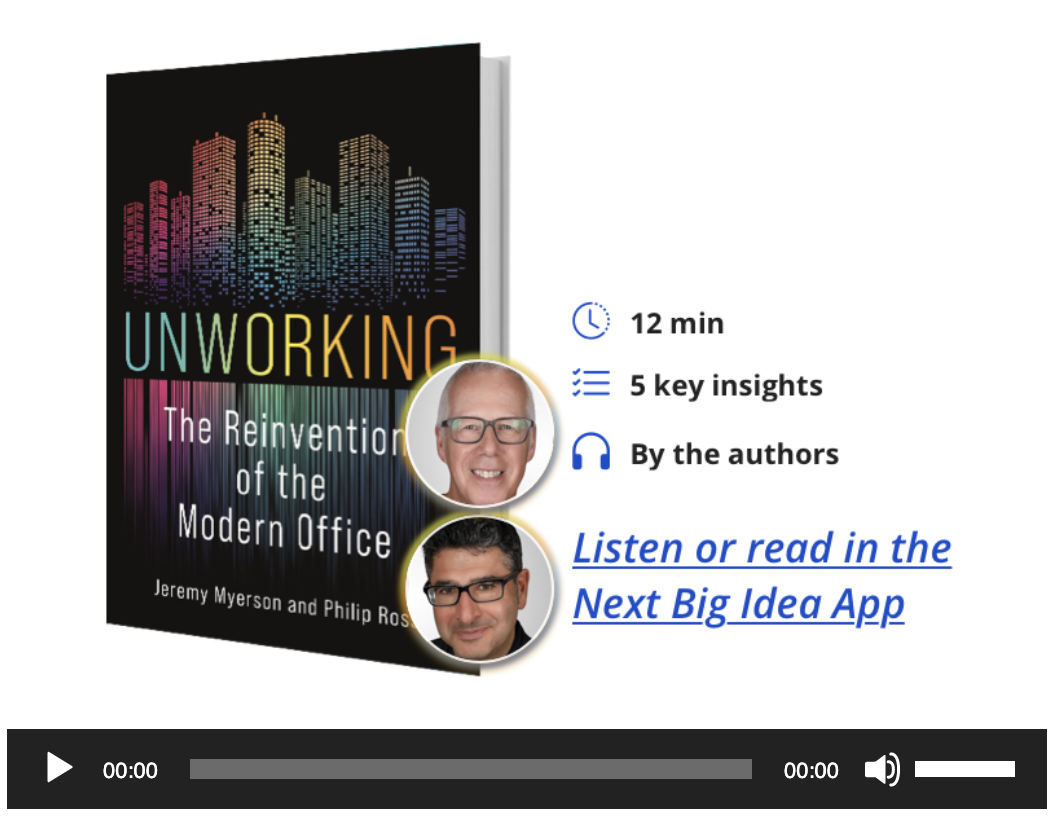Original article by Next Big Idea Club
Philip Ross is a commentator and consultant on the future of work, and the co-founder of the WorkTech conference and WorkTech Academy with Jeremy Myerson. Jeremy Myerson is a researcher, writer, and professor of design at the Royal College of Art, and Director of WorkTech Academy.
Below, Philip and Jeremy share 5 key insights from their new book, Unworking: The Reinvention of the Modern Office.
1. It’s all about experience.
Increasingly, the office is no longer a place or a process—it’s an experience. We must magnetize people to want to come back in, not mandate them. It will be vitally important to think in a customer-centric way about providing a great workplace experience for employees, who now have a choice of where to work in the hybrid era. This means increased consideration for how people feel about work, providing experiences that improve satisfaction and wellbeing, as well as build culture and purpose.
Companies will learn from hospitality, retail, and entertainment about how to curate super-experiences, so that when people decide to go into the office, it will be memorable. Already, we are seeing new job titles emerge such as the Chief Experience Officer (CXO), Head of Team Anywhere, Chief Heart Officer, and Head of Dynamic Work. These new titles reflect a wider remit beyond efficiency to embracing experience, and a new reality in which employees work across a variety of settings, with the office being just one of them.
Google and Zappos are among the companies that have studied participatory experiences like the Burning Man Festival in the Nevada Desert to find ways to build more effective communities and teams. Burning Man’s education director, Stuart Mangrum, told us, “Behavioral psychology in the workplace has largely been Pavlovian and Taylorist—to get people to do what you want them to do. Burning Man is about intrinsic motivation and radical inclusion.”
2. From dumb to data.
We predict a rise of data and measurement, or telemetry, what we might call the science of work. Company leaders in the past dismissed office buildings as dumb containers, a cost rather than investment. That’s because these buildings yielded little actionable data that could be useful to the business or its people.
“Company leaders in the past dismissed office buildings as dumb containers, a cost rather than investment.”
The office of the near future will be much smarter. Through sensing and video technologies, it will provide constant data flows that inform evidence-based decision-making on everything, from HR policies and wellbeing to organizational structure and office redesign. Companies will embrace the data analytics, spatial intelligence, and sociometric technologies that offer insights into performance in the workplace. Artificial intelligence and machine learning will shape everything we do in the workplace, for instance reducing food waste or energy use.
In the analogue world of the 1920s, frock-coated supervisors watched the backs of people’s heads, leading to presenteeism. Today, digital measurement techniques focus on what people produce—their output rather than the time they sit at a desk.
3. Rethink learning itself.
Large organizations, such as banks and law firms, have mandated their people back to the office because they feel that company learning and mentoring of junior staff by senior partners suffered with the rise of remote work. But learning methods based on being physically present in an office increasingly look past their sell-by date.
Company leaders need to unwork traditional assumptions around training and development to find new digital and immersive ways of supporting employee learning.
“Learning methods based on being physically present in an office increasingly look past their sell-by date.”
This might involve virtual, mixed, or extended reality, even the Metaverse. Or the use of the creative arts to coax different thought patterns and new ideas out of employees. One of the most innovative training programs we’ve seen is at NASA where a designer-in-residence, Nelly Ben Hayoun, set up an International Space Orchestra from among the scientists on NASA’s team. Most had never played a musical instrument before. The effect on breaking up groupthink was dramatic.
4. One size does not fit all.
It never did, but even less so in the hybrid era. Company leaders should reverse their blind adherence to blunt economies of scale, universal planning, and high-density open plan. They should instead support a more heterogenous approach.
Future workforces will be multi-generational and more diverse in terms of ability, race, ethnicity, and sexual orientation. Workplaces will need to be inclusive so that everyone feels welcomed and valued, irrespective of their differences. There is little point in recruiting diverse talent—including neurodiverse people—with a wider perspective and capacity for innovation if the office is one-size-fits-all. Inclusive design is the way forward. Choice and variety are the order of the day.
To provide the right experience, organizational decision making may need rewiring. If we think of work today as one continuum of the behavioral, physical, and digital, then why do we still need siloed departments for HR, IT, and Facilities? These silos should be forced to work in harmony or junked altogether, replaced by a single team focused on delivering a unified employee experience.
“Choice and variety are the order of the day.”
The same goes for leadership models. The old style of top-down leadership no longer applies. Emergent approaches, from compassionate leadership to agile methodology or Stanley McCrystal’s team of teams, need to come to the fore.
5. Rethink the urban realm.
We’ve got to get away from the idea that city zoning and commuting patterns are set in stone. The Central Business District, which shaped the 20th century city, will not be around forever.
There exist a range of new ideas for the city as it adapts to the rise of hybrid work. For instance, the 15-minute city, an idea born at Sorbonne and implemented in Paris. In this design, all work, shopping, leisure, education, and healthcare are deliberately grouped within a 15-minute walk or cycle from home. Another concept is City 2.0 which has an operating system, so that we can reboot the urban realm. There are also talks of reinventing the Central Business District into the Central Social District.
Already we are seeing the rise of mixed-use urban developments which group together a range of functions, not just office towers. This is the blurring of working, living, shopping, leisure, and culture: We call this trend Intermix. The City of London, for example, has announced a strategy to bring more arts and culture back into the Square Mile. Hybrid work will lead to the Hybrid City.


